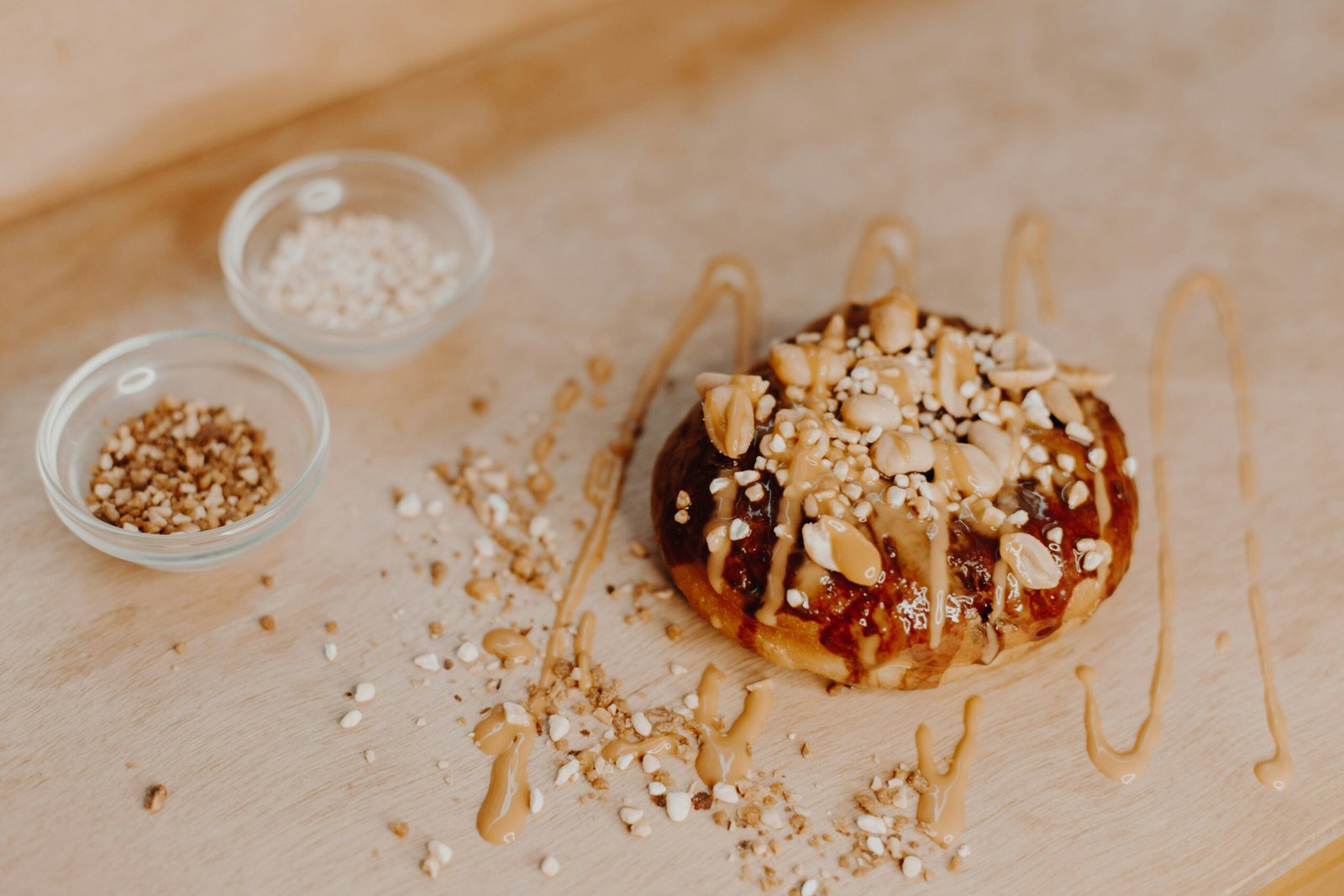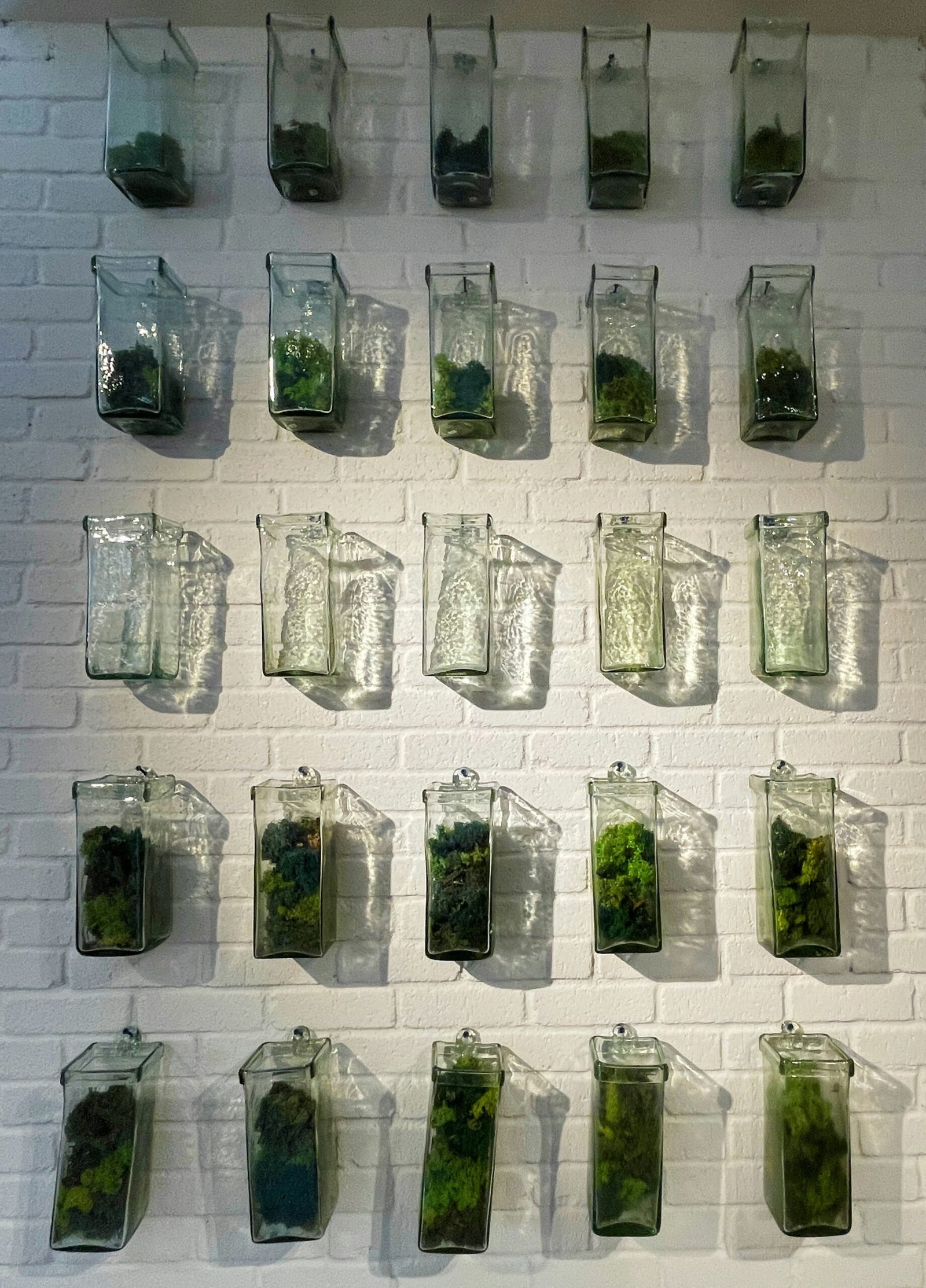Introduction to Small Kitchen Organization
In today’s fast-paced world, the kitchen serves as more than just a space for cooking; it is often the heart of the home, where families gather and memories are created. However, for many homeowners and renters, limited square footage can pose significant challenges in efficiently utilizing this crucial area. Small kitchen organization is vital for creating a functional and aesthetically pleasing environment. It entails the strategic arrangement of tools, utensils, ingredients, and cookware to optimize every inch of space available.
Common problems such as clutter, inefficient storage solutions, and overwhelming chaos can undermine the kitchen’s usability, leading to frustration while preparing meals. Small kitchens might lack the expansive cabinetry found in larger spaces, prompting the need for innovative tactics that cater to storage without compromising style or accessibility. Addressing these challenges begins with understanding how to prioritize essentials and make the most of vertical and horizontal areas within the kitchen.
Effective small kitchen organization involves thoughtful planning and execution. Utilizing tools such as wall-mounted shelves, multi-purpose appliances, and creative storage solutions can significantly enhance your kitchen’s efficiency. Every item should have a designated space, minimizing clutter while ensuring that frequently used tools are always within reach. By identifying underutilized spaces, such as the area above cabinets or the inside of cupboard doors, one can implement additional storage options that maximize the kitchen’s potential.
Throughout this blog post, we will delve into a variety of creative and practical suggestions aimed at transforming small kitchen spaces into organized and functional areas. By embracing these strategies, individuals can cultivate a kitchen that is not only manageable but also inviting and conducive to memorable family moments.
Understanding Your Kitchen Space
To effectively organize a small kitchen, it is essential to first comprehend the layout and dimensions of the available area. Begin by assessing the overall kitchen size and how the various elements, such as cabinets, countertops, and appliances, are arranged. This evaluation will provide insight into the areas that are functioning optimally and those that may require improvement. Take note of the key features of your kitchen, including the shape, traffic flow, and natural light, as these factors significantly influence the available usable space.
One of the primary areas to consider is your cabinet space. Evaluate the number of cabinets you have and their storage capacity. Are they filled to capacity, or do you have room for additional items? Take inventory of what is stored in each cabinet, and consider disposing of or donating items that are no longer needed. By categorizing the items based on frequency of use and type, you can optimize the efficiency of your cabinet space, allowing for easier access to essential kitchen tools.
Counter areas play a critical role in kitchen organization as well. Analyze how you utilize your countertop space. Is it cluttered with appliances and utensils, or is it adequately clear to allow for meal preparation? Implementing designated zones for specific tasks, such as cooking or baking, can enhance workflow and maximize the effectiveness of your counter space.
Lastly, don’t overlook under-utilized zones, such as the spaces beneath sinks or above cabinets. Often, these areas can be transformed into valuable storage by using clever solutions like pull-out drawers, racks, or decorative bins. By taking a comprehensive look at your kitchen layout and recognizing its unique characteristics, you will be able to develop personalized organization strategies that cater to your specific needs.
Smart Storage Ideas: Pull-Out Shelves
In designing a functional kitchen, optimizing storage is paramount, particularly when space is limited. One effective solution is the installation of pull-out shelves, which can transform traditional cabinets and pantries into highly efficient storage areas. These shelves provide a multitude of benefits, notably ease of access to regularly used items, thus reducing the frustration associated with rummaging through deep or cramped spaces.
Pull-out shelves allow you to utilize the full depth of your cabinets, making it simpler to store and retrieve kitchen essentials such as pots, pans, and small appliances. By bringing items closer to you, they eliminate the need to contort your body or dig through layers of items to find what you need. This increased accessibility is particularly beneficial for seniors or those with mobility challenges, fostering a safer and more ergonomic kitchen environment.
When considering pull-out shelves, there are a few key factors to keep in mind for optimal selection and installation. First, ensure the shelves are constructed from durable materials that can withstand the weight of your kitchen items. Opt for shelves with smooth gliding mechanisms to guarantee effortless operation. Additionally, customizing the height and spacing of pull-out shelves can accommodate various types of kitchenware, enhancing functionality. The installation process typically requires basic tools and can often be completed by DIY enthusiasts, further ensuring cost-effectiveness in enhancing your kitchen’s storage capabilities.
In your pursuit of small space organization, investing in pull-out shelves can significantly enhance your kitchen’s usability. They not only reduce clutter but also maximize every inch of available space, making your cooking area more efficient and enjoyable. By integrating these smart storage solutions, you can create a kitchen that is both neat and highly functional.
Magnetic Spice Racks: A Space-Saving Solution
In today’s kitchens, maximizing available space has become an essential strategy for effective organization, especially in small areas. One innovative solution gaining popularity is the use of magnetic spice racks. These versatile organizing tools allow spices to be stored vertically, making full use of walls or even the refrigerator. This not only declutters counters but also enhances accessibility, allowing quick access to seasonings while cooking.
When considering placement for magnetic spice racks, the wall above the countertop is an ideal location. This area is often underutilized and can accommodate various magnetic containers, creating an attractive and practical spice display. Alternatively, the side of the refrigerator provides another excellent opportunity to optimize space, turning a commonly overlooked surface into a functional storage solution. For individuals in apartments or homes with limited cooking area, these racks serve as a perfect blend of aesthetics and utility.
Creating an appealing display with magnetic spice racks can elevate the kitchen’s overall decor. Choose containers in complementary colors or materials to match existing kitchen elements. Clear glass jars allow for a quick visual inspection of spice contents, while metal tins can add a modern touch. To further enhance organization, consider labeling each container. This practice not only aids in identifying spices quickly but also adds a personalized touch to your kitchen.
For those on a budget, DIY magnetic spice racks can be a fun and resourceful project. Simple magnetic strips can be adhered to the wall or the side of the fridge, onto which small jars or tins can be attached. Repurposed containers can also be utilized, making this option both cost-effective and environmentally friendly. By implementing magnetic spice racks in various creative ways, individuals can significantly enhance the organization of their kitchens while ensuring spices are easily accessible.
Multi-purpose Storage Containers: A Must-Have
In the quest for an organized kitchen, multi-purpose storage containers play a crucial role in optimizing both space and functionality. These versatile containers can be employed to store a multitude of items, ranging from pantry staples to kitchen tools, streamlining the overall organization of the cooking area. One of the most effective strategies for achieving order in a small kitchen is to utilize stackable bins. These bins not only maximize vertical space but also enable easy access and visibility of contents, ensuring that items are readily available when needed.
Another valuable addition to your kitchen organization system is the use of drawer organizers. By partitioning drawers with these inserts, utensils, tools, and miscellaneous kitchen items can be categorized and stored efficiently. This method reduces clutter, making it easier to locate essential items during meal preparation. Drawer organizers are particularly beneficial in smaller kitchens, where every inch of space counts.
Clear jars and containers are indispensable for pantry organization, as they allow one to see contents at a glance. By using clear storage solutions, ingredients can be easily identified, which aids in meal planning and reduces the likelihood of duplicating purchases. Moreover, utilizing clear jars can create an aesthetic appeal, transforming a pantry into a visually pleasing and orderly space. Opting for uniform container sizes can further enhance this visual coherence, creating a more polished appearance.
Incorporating multi-purpose storage containers into your kitchen not only maximizes available space but also promotes a clean and organized environment. They offer a practical solution to the challenges posed by limited kitchen real estate, allowing for seamless functionality and aesthetically pleasing layouts. Consider integrating these versatile tools into your organization strategy to elevate your kitchen experience.
Decluttering Your Kitchen: Tips and Tricks
Decluttering your kitchen is a pivotal step toward creating an organized and efficient cooking space, particularly in a small area where every inch counts. To begin, it is essential to set aside some dedicated time for this process. Start by taking everything out of your cabinets and drawers, which provides a blank canvas to evaluate your items systematically. This approach not only helps in visualizing the contents but also allows you to assess items that you might have forgotten about.
Next, categorize your kitchen items into groups such as cookware, utensils, small appliances, and food supplies. This step makes it easier to determine what you have and what you actually use. As you go through each category, employ the “one-year rule”; if you haven’t used an item in the past year, consider whether it deserves a place in your kitchen. Separate items that are in good condition but no longer serve your needs to be donated. This not only lightens your workload but also gives them a new life, benefiting someone else.
After deciding what to keep, it is crucial to find designated spaces for each item. Invest in storage solutions that fit your unique kitchen layout—such as shelf risers, drawer dividers, and wall-mounted racks—to enhance accessibility and visibility. Furthermore, label containers and drawers; this practice facilitates easy maintenance and helps to keep clutter at bay. Embracing minimalism in your kitchen fosters a more serene atmosphere, encouraging you to engage deeper in the cooking and dining experience.
Additionally, maintaining this newfound organization requires routine evaluation. Set a monthly reminder to reassess your kitchen items and ensure that clutter is not creeping back in. Adopting this proactive stance not only supports physical space but also promotes psychological well-being, as an organized kitchen can lead to reduced stress and improved focus while cooking.
Organizing Cabinets: Best Practices
When it comes to maximizing kitchen space, organizing your cabinets is essential. With thoughtful strategies, you can create an efficient and functional layout that enhances your cooking experience. One of the primary best practices is to group similar items together. This allows for easy access and quick identification of what you need, whether it be dishes, pots and pans, or pantry essentials. By maintaining dedicated sections within your cabinets, you can streamline your workflow and reduce unnecessary clutter.
Using drawer dividers is another effective strategy for creating a well-organized kitchen. Dividers not only separate utensils from larger items, but they also prevent chaos during meal preparations. For instance, keeping your spatulas, ladles, and knives in designated sections minimizes the chance of confusion and improves organization. Additionally, consider employing transparent storage solutions such as bins or containers. This approach allows you to easily see what you have on hand, ensuring that you won’t forget about the ingredients or tools tucked away at the back.
Maximizing vertical space is crucial in small kitchens where every inch counts. Utilize stackable shelves or risers within your cabinets, creating additional layers for storing items efficiently without hindering accessibility. Furthermore, don’t overlook the doors of your cabinets; implementing door-mounted racks can significantly increase storage capacity. These racks are excellent for holding spices, pot lids, or small pantry items, which can free up space on your shelves for larger cookware or serving dishes.
By utilizing these best practices in organizing your kitchen cabinets, you can create a space that not only looks tidy but also facilitates easy access to your essential cooking items. This effective organization system will significantly enhance your kitchen’s functionality, allowing you to enjoy a more efficient cooking environment.
Optimizing Countertop Space: Practical Solutions
In small kitchens, creating an organized and efficient countertop space can be a challenge, given the often limited area available for storage and preparation. However, implementing practical solutions can enhance both functionality and aesthetics. One effective approach is to utilize tiered shelves, which allow for vertical storage and make better use of vertical space. By stacking items like spices, cookbooks, or dishware, you can keep frequently used items within easy reach without overcrowding the surface area.
Another efficient solution involves the use of hanging racks. These can be mounted overhead or on walls, providing additional storage for pots, pans, and utensils. Not only do hanging racks free up valuable countertop space, but they also add a dynamic visual element to your kitchen. Consider adding hooks or magnetic strips to hold knives and other metallic tools, minimizing clutter and ensuring that essential items are easily accessible.
Additionally, incorporating decorative trays can harmonize style with function. Trays can serve as a designated space for items like oils and condiments, thus preventing the clutter that may accumulate on the countertop. Choose trays that complement your kitchen decor to maintain a cohesive look while providing a practical solution for organizing everyday essentials. Furthermore, small baskets can be used to corral miscellaneous items, keeping them tidy and out of sight.
Lastly, embracing multi-functional items can significantly enhance countertop organization. For instance, investing in a kitchen cart not only provides extra storage but also can be moved out of the way when not in use, effectively decluttering your kitchen surface. By employing these practical solutions, you can optimize your small kitchen’s countertop space, maintaining both functionality and a visually appealing environment.
Space-Saving Kitchen Hacks You Need to Try
When it comes to organizing a kitchen, especially in small spaces, innovative solutions can make a significant difference. One effective approach is utilizing walls for storage. Installing sturdy hooks or pegboards can transform empty wall space into functional storage areas. These hooks can be used to hang utensils, pots, and even cutting boards, freeing up valuable counter and drawer space.
Additionally, consider the potential of magnetic strips. These can be affixed to walls or the sides of cabinets to hold metal utensils or spice jars, keeping essential items within easy reach while decluttering countertops. For an aesthetically pleasing option, decorative magnetic spice tins can allow for both organization and design cohesion in your kitchen.
Repurposing furniture is another clever way to maximize storage. A small shelving unit can serve as a pantry, while an old wine rack can provide an attractive solution for organizing additional kitchen items such as towels or pots. Choosing multipurpose furniture, such as an island that includes shelves or drawers, can also enhance functionality without consuming too much space.
Utilizing clear containers in your pantry can streamline organization, making it easier to identify stored food items. Consider investing in stackable bins or jars; they can help maximize vertical space and maintain a tidy appearance. Labelling these containers can further assist in maintaining an orderly kitchen environment.
Lastly, think vertically by using the tops of cabinets for additional storage. Decorative baskets or bins can be placed atop cabinets to store rarely used items. This approach keeps your kitchen organized while ensuring that essential tools and appliances remain easily accessible. Overall, these space-saving hacks are not only practical but also help in cultivating a more efficient kitchen environment.
Conclusion: The Benefits of an Organized Kitchen
Maintaining an organized kitchen, especially in a small space, can have profound effects on both functionality and enjoyment during meal preparation. As explored throughout this blog post, adopting effective organization techniques can streamline your cooking processes, declutter your environment, and transform your kitchen into a more inviting space. By applying various tips and strategies such as utilizing vertical storage, incorporating multifunctional furniture, and implementing clear labeling systems, even the smallest kitchens can maximize efficiency and usability.
Another significant advantage of an organized kitchen is the reduction of time spent searching for ingredients and cooking tools. When every item has a designated place and is easily accessible, the cooking process flows more smoothly, allowing cooks to focus on creativity rather than chaos. This not only enhances productivity but also transforms the overall cooking experience into one that is more enjoyable and less stressful.
Moreover, an organized kitchen fosters better meal planning and healthier eating habits. By keeping ingredients visible and well-ordered, individuals are more likely to utilize fresh produce and engage in cooking at home rather than succumbing to convenience foods. This can result in improved nutrition and potentially reduced food waste, leading to both economic savings and enhanced well-being.
Embracing these organizational tips not only optimizes the use of space but also empowers individuals to take pride in their cooking environment. A tidy kitchen is not merely about aesthetics; it is a foundation for culinary creativity and efficiency. Therefore, we encourage readers to implement the practical suggestions provided, paving the way for a more organized and enjoyable kitchen experience in the future. The rewards of a structured kitchen extend beyond mere convenience, creating an environment where cooking becomes a joy rather than a chore.












